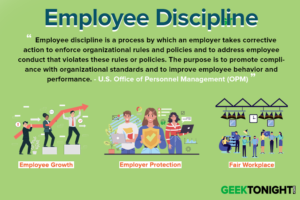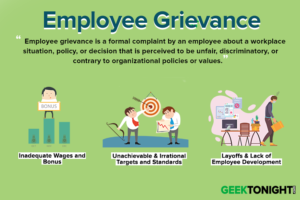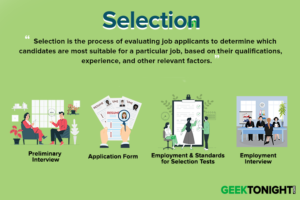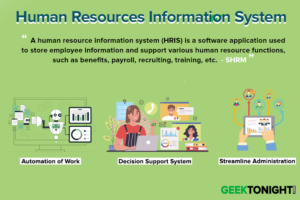What is HRM Practices?
HRM practices refer to organisational activities directed at managing the pool of human resources and ensuring that the resources are employed towards the fulfilment of organisational goals. HRM practices may differ from one organisation to another and from one country to another.
Table of Content
Many researches on HRM practices have been conducted from time to time and researchers have identified different practices by different names. As quoted in (Kok Jan de et al.,2003), researchers variously refer to certain sets of HRM practices influenced by the HRM profession as “best practice,” or “high performance”( Huselid, 1995), “formal”(Aldrich and Langton, 1997), “sophisticated”(Golhar and Deshpande, 1997) or as “professional”(Gnan and Songini, 2003). Pfeffer (1994; 1998), argued the most appropriate term is “Best HRM Practices”.
But according to Chandler and McEvoy (2000) , one of the lingering questions in HRM research is whether or not there is a single set of policies or practices that represents a ‘universally superior approach to managing people.
Several attempts have been made from time to time by different researchers to identify the type of HRM practices in different sectors. Initially Pfeffer (1994) identified 16 practices which denote best practice.
This was later refined to the following seven practices:
- Employment security
- Selective hiring
- Self-managed teams/team working
- High compensation contingent on organizational performance
- Extensive training
- Reduction in status difference
- Sharing information
Saxena and Tiwari (2009) examined the HRM Practices implemented by leading IT Companies such as TATA, Infosys and Wipro in India. They developed the 3cTER Framework of HRM practices and identified Training and Development, Employer-Employee Relations, Recognition through Rewards, Culture building, Career Development, Compensation and Benefits as important HRM Practices.
HR practices have a significant impact on vital issues in organizations such as turnover, productivity, job satisfaction, employee commitment, market share, as well as real and perceived financial performance.
The majority of researchers have noticed some differences in applying these practices between national and multinational organization. These differences are seen in the approaches of local and multinational companies to the different HR practices and are made more apparent when the characteristics of these multinationals is deeply explored.
Factors Affecting HR Practices
HRM practices differ from one country to another and the factors which affect the HRM practices include external and internal factors. As quoted by Ozutku and Ozturkler (2009) external and internal factors affecting HR practices differ significantly across countries. Some of the major potential influences are as follows:
- Economic Changes
- Technological Changes
- National Culture
- Legislations & Regulations
- Action of Unions
- Globalization
- Organizations Size
- Organisational Structure
- Business Strategy
- Top Management
- Academic and Professional influence on HR Practices
External Factors
External factors affecting HR practices are those pressures on firms that cannot be controlled and changed in a favorable way in the short run (Kane and Palmer,1995).
These factors include the following:
- Economic Changes
- Technological Changes
- National Culture
- Legislations & Regulations
- Action of Unions
- Globalization
Economic Changes
As a result of development of the global economy, the international dimension of HR practices has become more and more significant (Satow& Wang,1994). As discussed in the previous section, the focus of HR practices has shifted from traditional topics such as internal selection and rewards to concepts such as globalization and international competition.
Technological Changes
Technology affects HRM to a greater extent because of high degree of interaction between technology and HR. Technology changes the way we work, the roles we undertake and the interactions through which work gets done (DeFillippi, 2002).
For example, US mainly outsources its technological functions to Asian countries such as India which has become the hub for BPOs. These factors change HR practices in respective countries. Technological developments alter the context of HR practices and the way they are implemented.
National Culture
Understanding of culture is essential for organization to develop their business and human resource management effectively. Chandrakumara and Sparrow (2004) found that culture has crucial importance in organizations preferences in developing appropriate structure and methods for HR practices affectivity.
A substantial body of research has shown that management practices are influenced by national culture [Hofstede 1980]. Similarly, the culture of an MNC parent may affect the management of its foreign subsidiaries, Industry/Sector Characteristics: Organizations can be classified into manufacturing and service organizations for the purpose of analyzing the HRM practices. The idea behind this classification is the fact that different production processes necessitates different HR practices.
Legislations & Regulations
Legislations and regulations are frequently cited as having a direct impact on HR practices (Kane and Palmer, 1995). Every country has developed a set of regulations for the management of human resources, so, the HRM practices have to be designed or modified according to these regulations. For example, hiring employees at branch locations in different locations might change the requirements on minimum wage, tax allowances or working hours.
Action of Unions
Kochan et al. (1984) opine that the presence or absence of unions in organizations is a salient variable known to be associated with some HR practices. Actions of Competitors: There are many ways in which companies can gain a competitive edge or a lasting and sustained advantage over their competitors, among them being the development of comprehensive human resource practices (Jackson et al., 1989).
Globalization
Globalization has created a challenge for the organization in terms of management of human resources, some companies have tried to transfer the HRM practices from one country to another but it has been found that some practices can be transferred across nations almost without any change but some must be modified to become workable in another setting and some are more deeply culture-specific and may not always be transferable.
The findings of the study conducted by Tayeb (1998) support the argument that multinational companies’ HRM practices are more prone to local cultural influences than are their overall policies and strategies. Moreover, some of the practices which the company had imported from abroad had to be modified to make them workable, given its local cultural and non-cultural contexts.
Internal Factors
The Internal environment of organizations strongly affects their HR practices. The important internal factors are as follows:
- Organizations Size
- Organisational Structure
- Business Strategy
- Top Management
- Academic and Professional influence on HR Practices
Organizations Size
According to (McPherson,2008) evidence suggests that, there is a large number of small firms that do not institute formal HR practices whereas in large organizations sometimes for each functional level there may a need for a different HR department (Jackson et al.,1989; Kaynak et al., 1998).
Organisational Structure
A firm’s strategy and structure are important in determining HR practices flexibility and integration. There are important structural differences among firms that affect the way in which HR practices are designed and implemented (Garwin, 1986). For example, a truly bureaucratic organization being rigid to changes might adopt traditional HR practices of recruitment only through third party irrespective of fresh talents applying on their own.
Business Strategy
To gain competitive advantage, firms use different competitive strategies. These strategies are more productive when they are systematically linked with human resource management practices. Companies can improve their environment by making efficient choices about human resource practices that consistently support their chosen strategy (Schuler,1992).
Top Management
The influence of top management on HR practices is acknowledged by most writers, even if only to the extent of advising that top managements support should be present (Kane and Palmer, 1995) in designing and implementing HR policies.
Academic and Professional influence on HR Practices
HR staff are often involved in the decision making process about HR policies and practices. Their knowledge about alternative HR practices may represent important variables in their own right (Kane and Palmer, 1995).
Transfer of HR Policies and Practices
In a global context the transfer of knowledge and HR function is a part of multinational companies. Mostly the transfer of management and technology with capital and production took place across different nations. Multinational companies usually use four types of strategies for the transfer of HR policies and practices:
- Ethnocentric strategy which focuses on the use and implementation of the same human resource practices and policies in host country as employ in parent company.
- Polycentric strategy is used to employ local people on the managerial positions and the implementation of host country practices in the subsidiary.
- Regiocentric approach separates the operations of the company and transfer of the staff over different geographical areas.
- Geocentric approach is used to employ staff regardless of their nationality but suitable for key jobs in the company.
Human Resources Tutorial
(Click on Topic to Read)
Human Resource Management
Human Resources Tutorial
(Click on Topic to Read)







